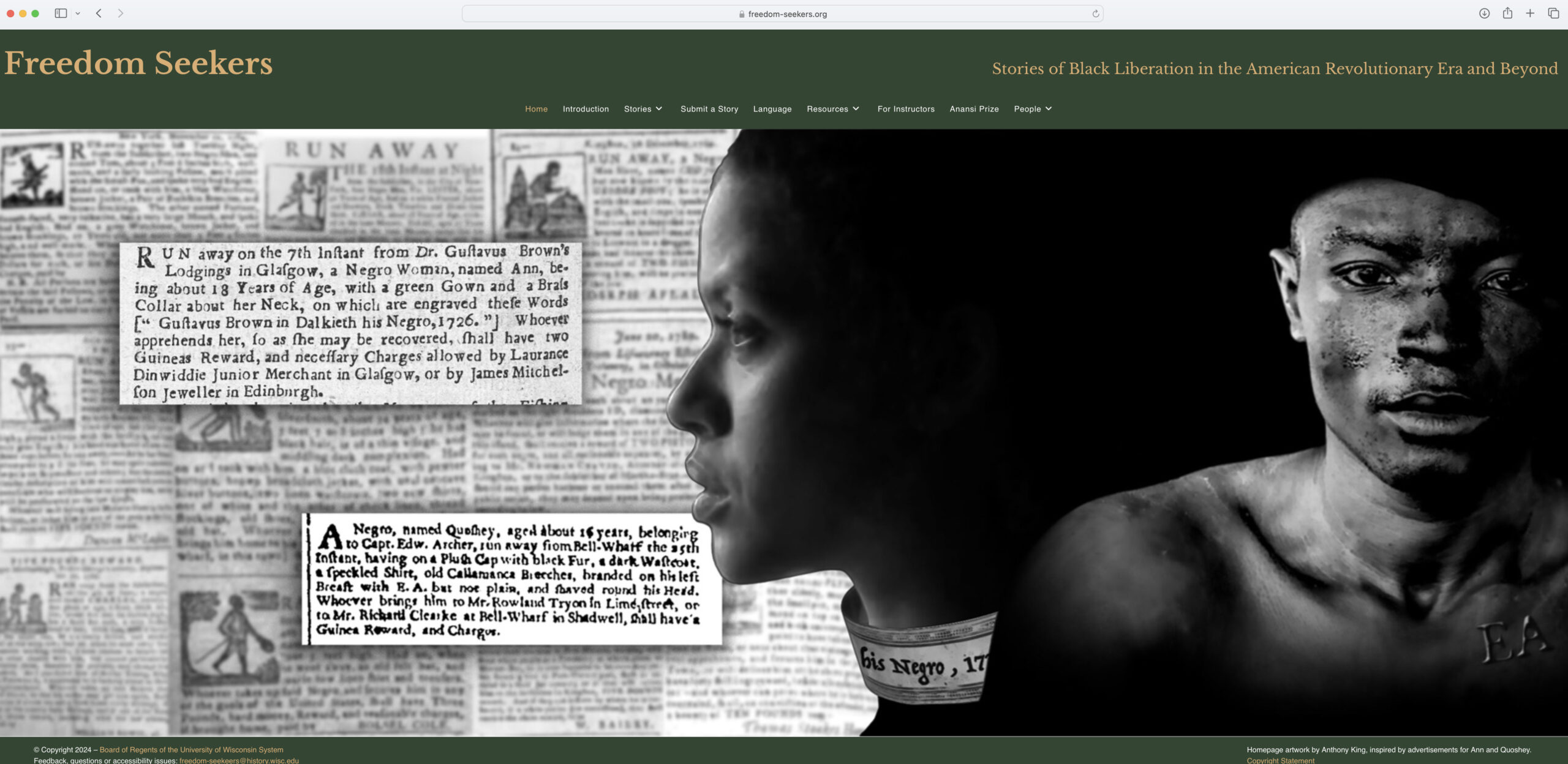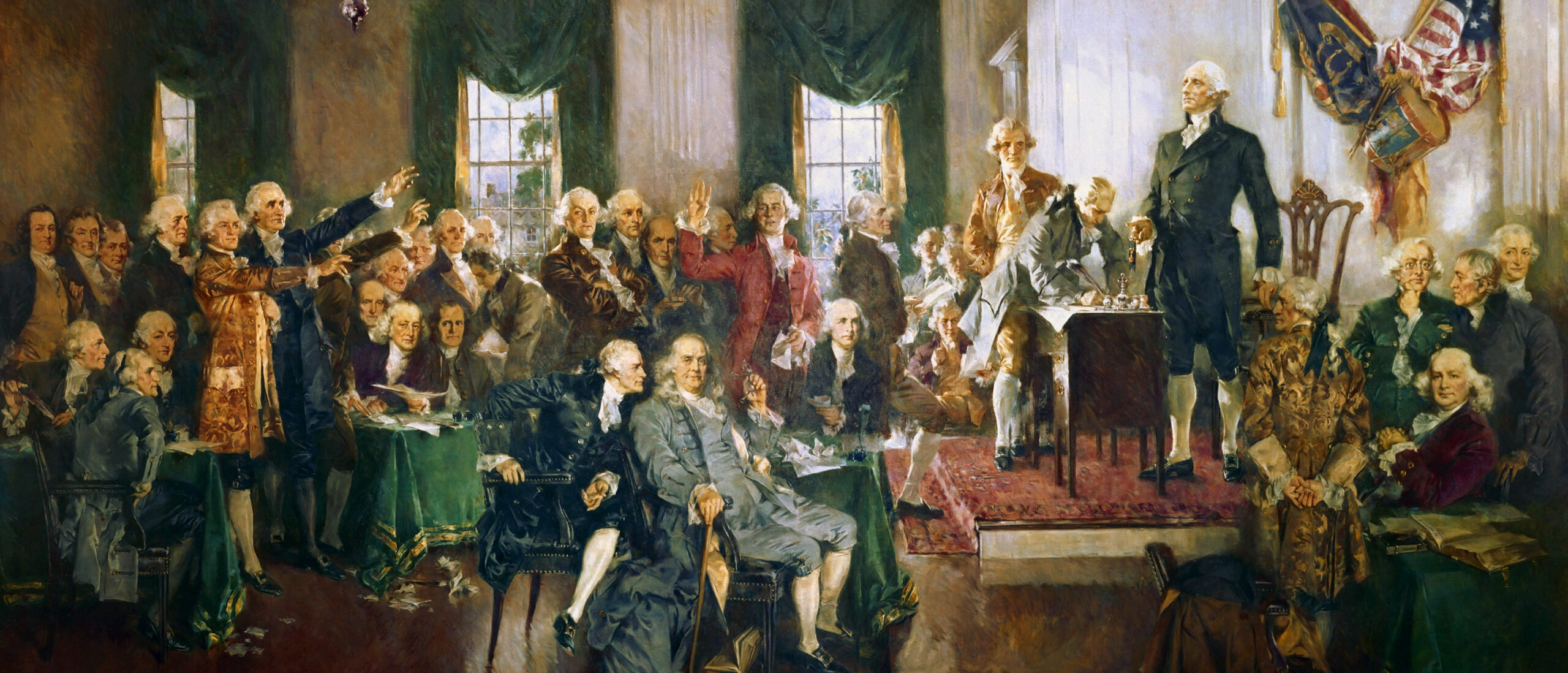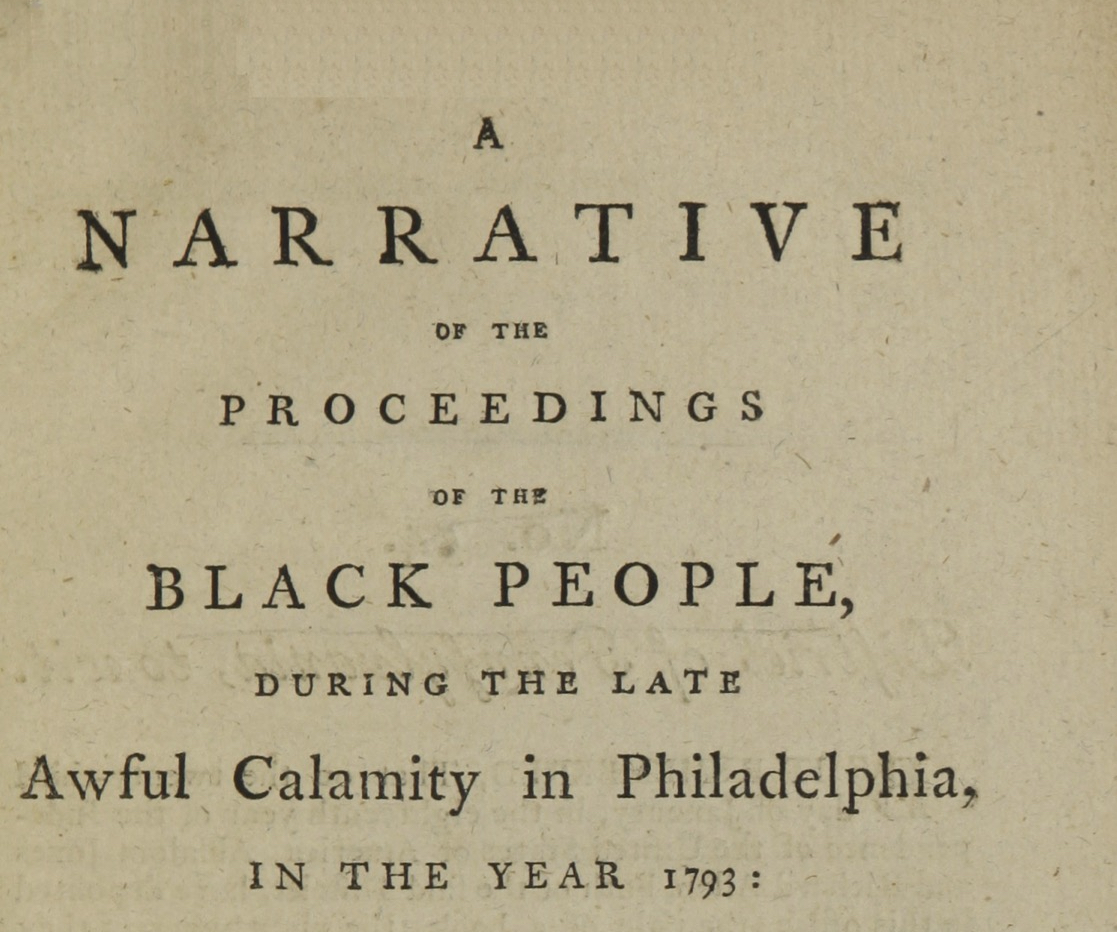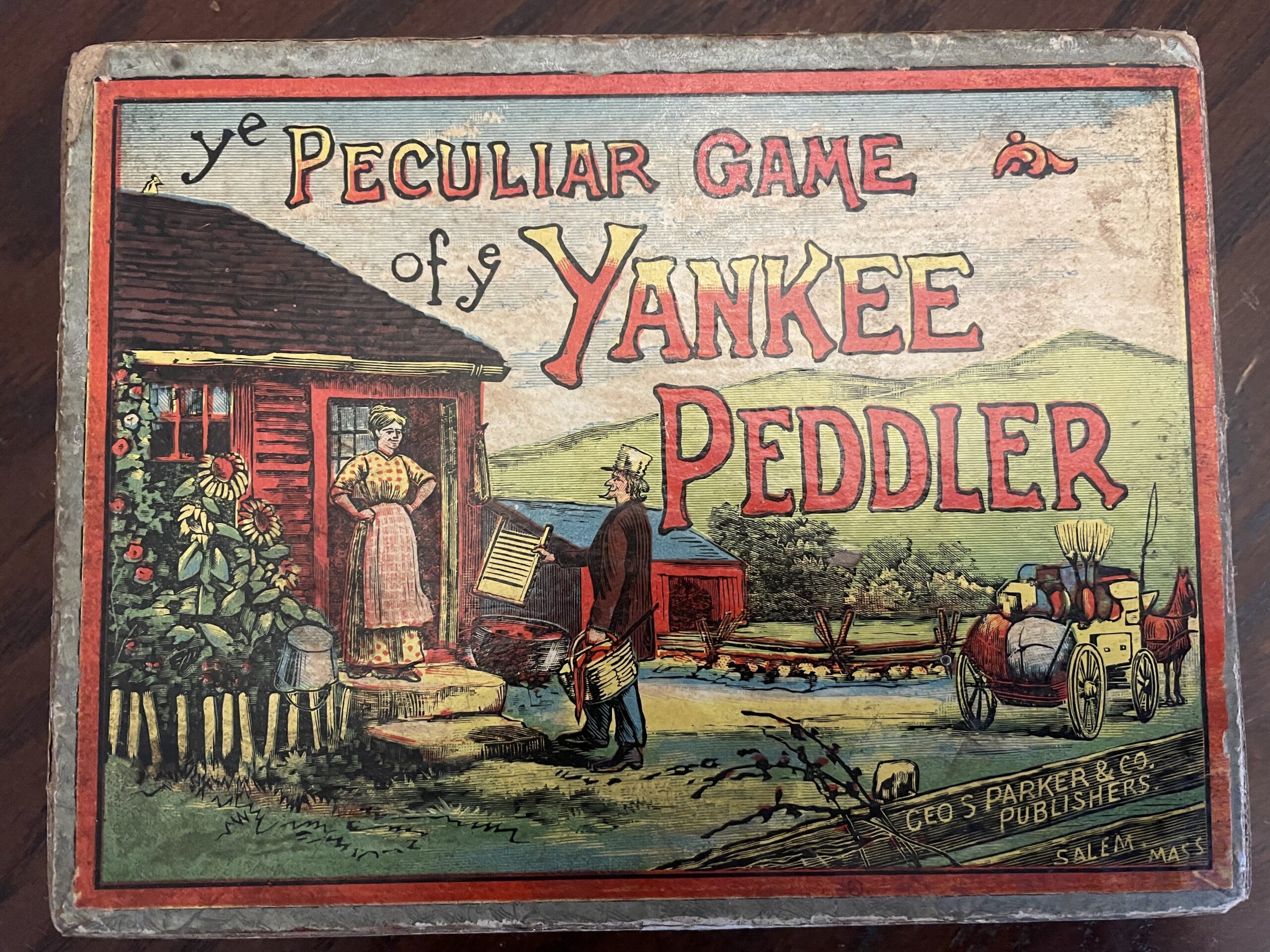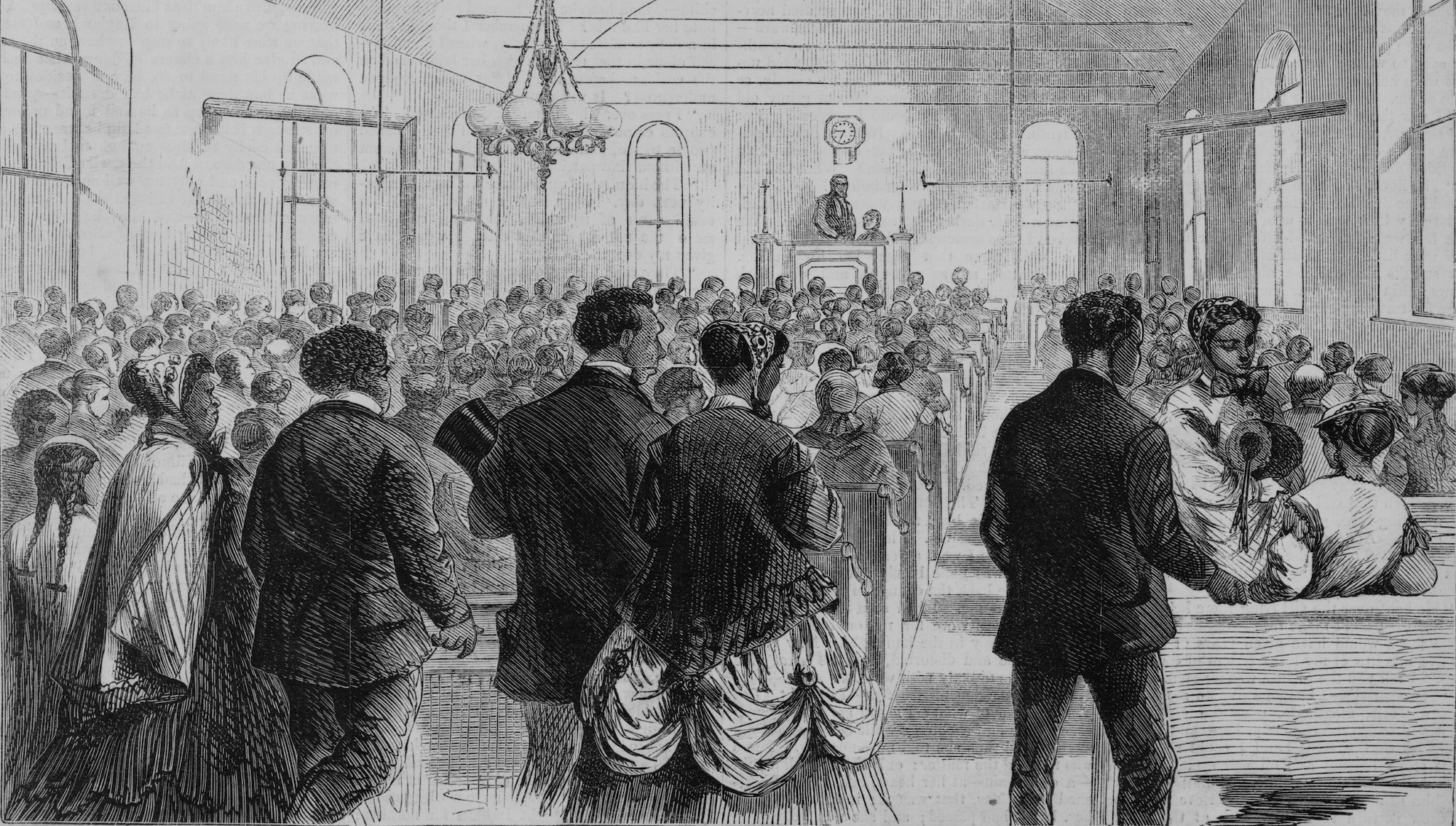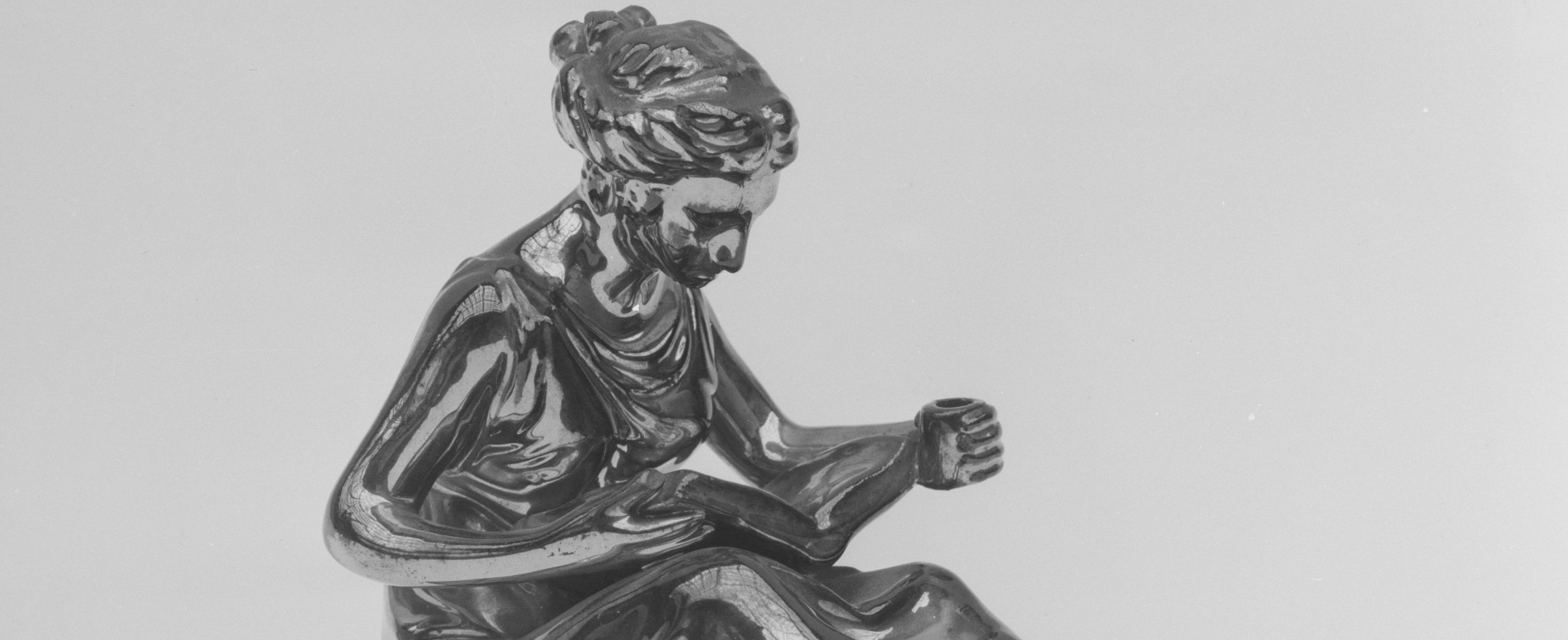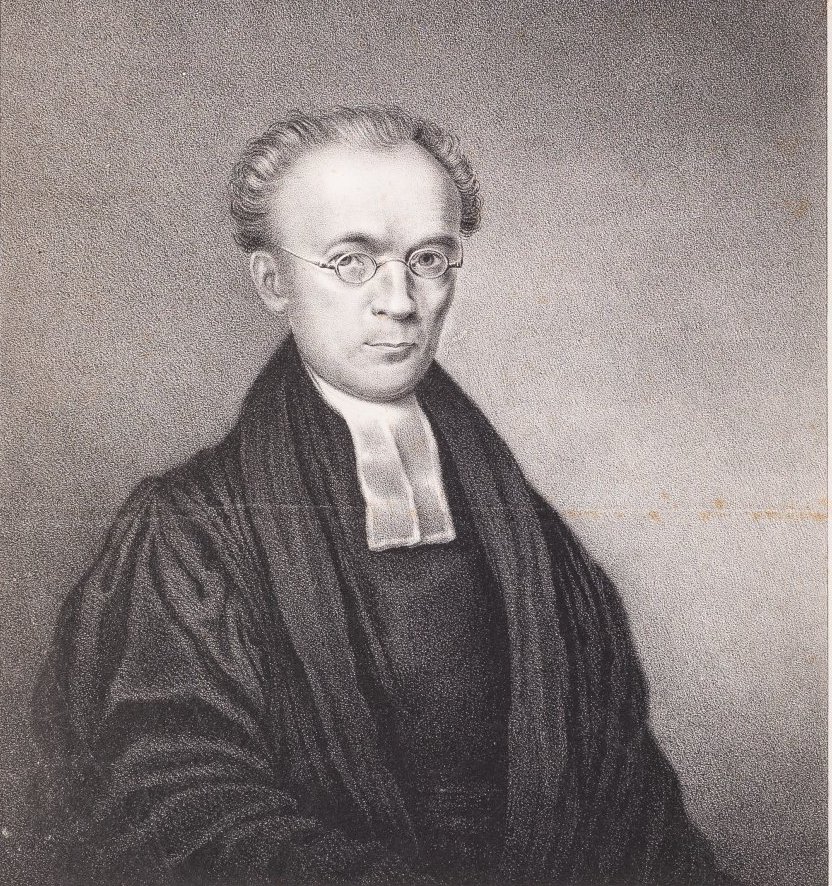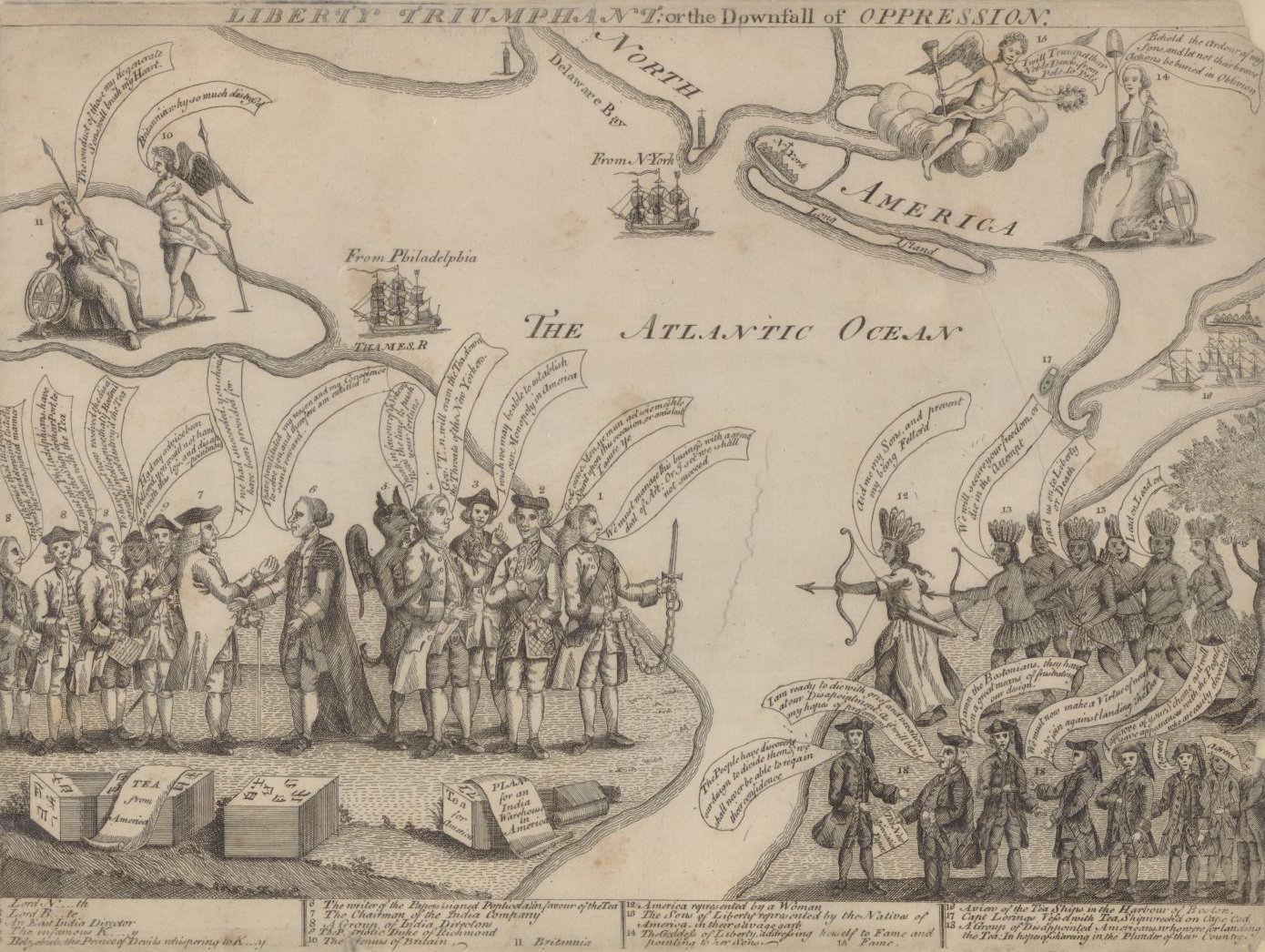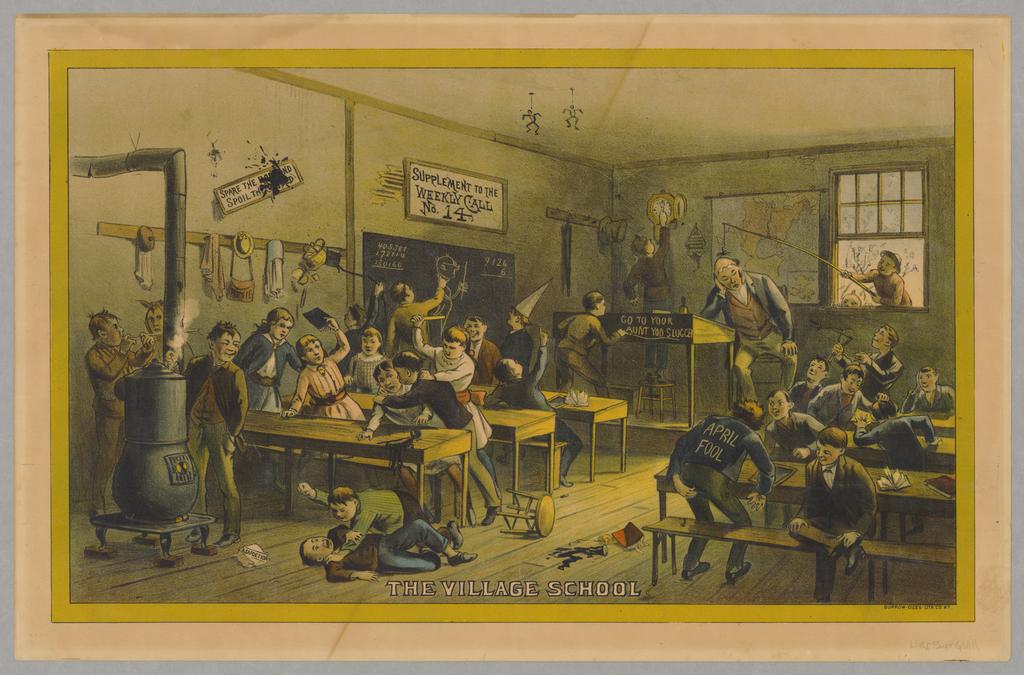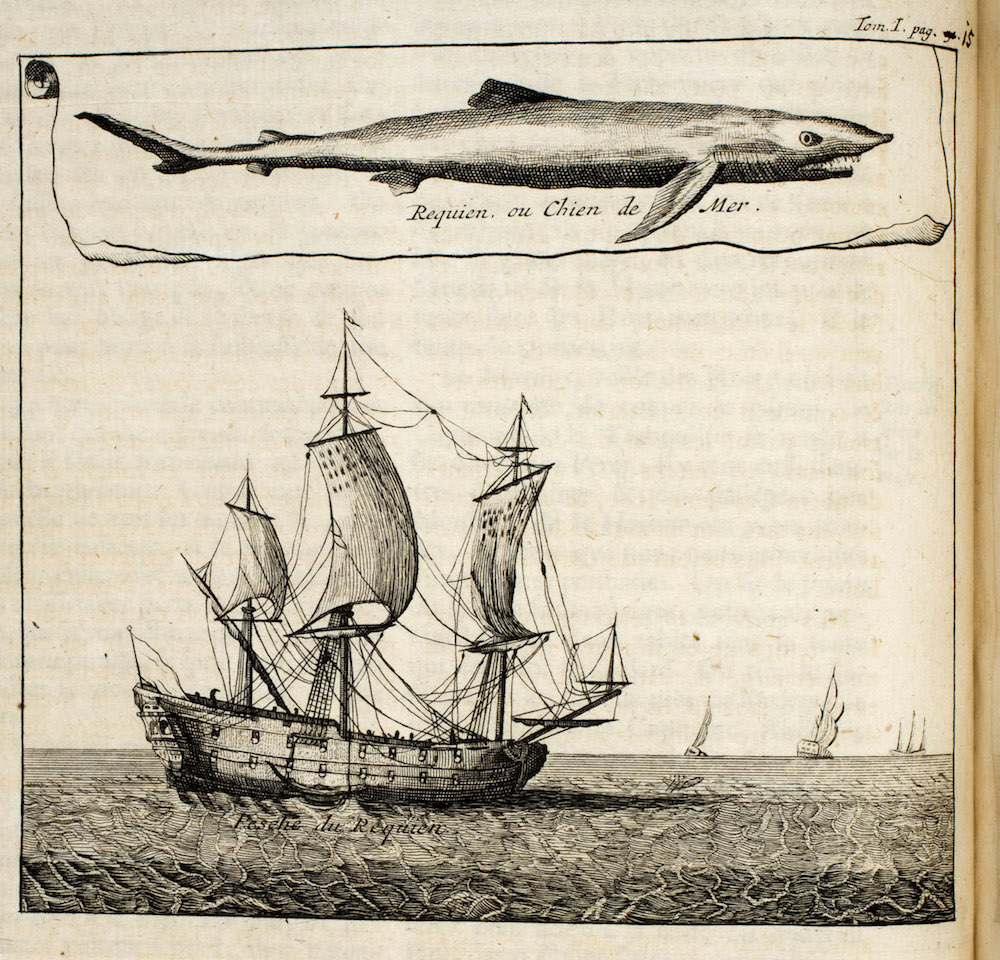“I now hold, as I have ever done, that the original intent and meaning of the Constitution (the one given to it by the men who framed it, those who adopted it, and the one given to it by the Supreme Court of the United States) makes it a pro-slavery instrument which I cannot bring myself to vote under, or swear to support.” (Frederick Douglass, 1849)
“I hold that the Federal Government was never, in its essence, anything but an anti-slavery government. Abolish slavery tomorrow, and not a sentence or syllable of the Constitution needs to be altered. It was purposely so framed as to give no claim, no sanction to the claim, of property in man.” (Frederick Douglass, 1863)
Those who live long lives in turbulent times may change their ideas without changing their principles, and Frederick Douglass—constantly studied as an exemplar of enslavement and escape, too seldom studied as a thinker—was no exception. In the 1840s, Douglass, one of the nation’s most prominent abolitionists, told audiences all across the northern states and in Europe that there was a deep and abiding connection between slavery and the 1787 Constitution. As Douglass noted in New York City in May 1845, in a speech that my U.S. History class at the Lawrenceville School read after reading portions of Douglass’s first autobiography, “all the states were united in one constitution and that constitution protected and supported slavery.” The “twenty six States that blaze forth” on the “flag, proclaim a compact to return me to bondage if I run away, and keep me in bondage if I submit,” maintained Douglass. After the publication of his best-selling Narrative in the spring of 1845, Douglass, who was still legally a slave, was in considerable danger and had to flee to England for safety. He returned a year later, a free man after British sympathizers purchased his freedom, and started an abolitionist newspaper in Rochester, New York. By the early 1850s, Douglass had shifted in his thinking about the Constitution. In 1852, in his famous Fourth of July Address, he maintained that the “principles” of the Constitution were “entirely hostile to slavery.”
Leading a student project that analyzed Douglass’s 1859-60 lecture tour of Great Britain prompted me to revisit how I was teaching the time period and to look closely at Douglass’s evolving understanding of the Constitution. Douglass’s speeches provided a window into the ways in which abolitionists thought about what the Constitution meant in 1859-60 and, most importantly, what it could or should become in the future. As Henry David Thoreau noted in an essay on slavery, the “law will never make men free; it is men who have got to make the law free.” Ultimately, my students and I had to consider how to make sense of the Douglass of the 1840s, who viewed the Constitution as a “covenant with death,” and the Douglass of the 1850s, who adhered to an antislavery reading of the Constitution. Most abolitionists lost hope that they would ever see the end of slavery after the passage of the draconian 1850 Fugitive Slave Act, but Douglass’s faith in the Constitution and in the political process only grew.
Most U.S. history texts, such as The American Pageant and Alan Brinkley’s American History, focus on the prominent Boston abolitionist William Lloyd Garrison and his close followers, who believed that the Constitution was a “covenant with death,” but generally do not discuss those radical abolitionists who believed that the Constitution not only provided a way to end slavery immediately everywhere in the United States but also enshrined the natural law principles of the Declaration of Independence into law. As historian James Colaiaco has argued, Douglass disregarded the “extrinsic intentions of the framers” in order to promote a constitutional “framework” that could serve to “implement the natural rights proclaimed in the Declaration of Independence.” Douglass’s positions sparked an interesting debate in my classroom about the various ways to interpret the Constitution.
Douglass in Exile
Douglass’s ship arrived in Liverpool in late November 1859. Douglass stayed with the Methodist minister H.O. Crofts, the husband of Julia Griffiths, a close friend and former editorial assistant with whom he worked closely in Rochester. A few weeks into his stay he received word that John Brown had been sent to the gallows. My students and I were initially surprised that Douglass commenced his lecture series in Halifax in December 1859 not with talks on Brown and Harpers Ferry or calls for “arms” and “materials of war” to be used to “rescue slaves by force,” but rather on the dangers of the Garrisonian doctrine of non-intervention and how to curb what he saw as the “nationalisation” of the institution after the infamous Supreme Court decision in Dred Scott v. Sanford (1857). Within days of the capture of the abolitionist John Brown at Harpers Ferry, Virginia, in October 1859, Douglass fled the United States. This was the second time that Douglass had to flee the country of his birth in order to save his life. The discovery by the authorities of a brief but incriminating note he wrote to Brown led Douglass to fear that he too would be put on trial in Virginia. Even “if the Courts of that slave state should acquit me, as they would not have been very likely to do, I could never hope to get out of that state alive,” wrote Douglass in a telling letter to the Irish abolitionist Maria Webb. “If they did not kill me for being concerned with Dear Old Brown,” they would have done so “for my being Frederick Douglass.”

Even though he was on the run, Douglass remained hopeful that the political foundations of the nation would lead to a peaceful end to human bondage. At the center of this optimism was his understanding of the antislavery nature of the Constitution, the very document his old friend and mentor Garrison had publicly burned in a large Fourth of July celebration in Framingham, Massachusetts, six years before. Even though he was on the run with a bounty on his head, Douglass never lost faith in the ability of the American political system to crush what abolitionists called the “Slave Power.” Douglass did not promote John Brown’s constitution while in Great Britain; instead, he railed against Garrisonian attacks on the federal Constitution, for if the document condoned slavery, then Chief Justice Roger Taney’s opinion in Dred Scott was legitimate. In his opinion for the court, Taney declared that the property rights of slave owners were absolute and that the federal government could not interfere with slavery. Douglass called for more antislavery politicians in the vein of Republicans William Henry Seward, Charles Sumner, and John Parker Hale, who advocated for the use of federal power to stop the expansion of slavery and end slavery in the territories. Douglass believed that the election of an antislavery president was close at hand. Douglass urged abolitionists in England and Scotland to hold fast to the antislavery principles that had been thrown aside by Taney and to work with their American counterparts in putting antislavery men into office.
Douglass and mainstream Republicans were in complete agreement that there was “not a word” in the Constitution that favored the idea of “holding property in man.” Douglass, however, believed that the Constitution could be used to eradicate slavery everywhere and not just in the federal territories or the District of Columbia. In making his textual arguments, Douglass drew from a small and varied, but nonetheless powerful, body of legal scholarship that dated back to the 1830s. Radical antislavery constitutionalists agreed that the due process clause of the Fifth Amendment, along with the privileges and immunities clause in Article IV, Section 2, and the guarantee of republican government in Article IV, Section 4, all undermined the slave system. Douglass was influenced in his thinking by Gerrit Smith, Alvan Stewart, Lysander Spooner, the somewhat unhinged George Washington Mellen (he spent time in a padded room for professing that he was the real George Washington), and, most importantly, William Goodell, author of the 1844 Views of American Constitutional Law. Goodell was a forceful proponent of the use of the guarantee of republican government clause in the Constitution to destroy the slave system.
In his second autobiography, My Bondage and My Freedom (1855), Douglass declared that he “became convinced” after reading the works of Goodell and Spooner, and conversing with his close friend and mentor Gerrit Smith, that “the constitution of the United States not only contained no guarantees in favor of slavery, but, on the contrary, it is, in its letter and spirit, an anti-slavery instrument, demanding the abolition of slavery as a condition of its own existence, as the supreme law of the land.” In January 1851, he told Smith, a wealthy New York abolitionist, that he had “decided to let Slaveholders and their Northern abettors have the Laboring oar in putting a proslavery interpretation upon the Constitution.” Douglass believed that an antislavery reading of the Constitution could assist abolitionists in their quest to destroy the Slave Power. In 1855, Douglass helped to form the Radical Political Abolitionist Party, which affirmed the antislavery nature of the Constitution and the necessity of protecting human rights.
Douglass vs. Thompson
Douglass’s frequent attacks on a proslavery reading of the Constitution in his lectures in England and Scotland brought him into conflict with the prominent abolitionist George Thompson (1804-1878) who, like Garrison, advocated for disavowal from politics and for disunion. Thompson criticized Douglass for going back on positions he had articulated while on a lecture tour of Great Britain in the mid-1840s and urged him to return to his old view that slavery was, to borrow a phrase from historian William Wiecek, “the witch” at the nation’s “christening.” In his lecture at Glasgow City Hall on February 28, Thompson argued that Douglass’s views fifteen years earlier supported the Garrisonian notion that the Union needed to be dissolved “as the first effectual step towards the overthrow of slavery.” After offering the audience a brief history of Bloody Kansas and John Brown, along with the Dred Scott case, Thompson turned to the constitutional arguments of the Republicans, a party he despised but one that he believed was indeed acting in accordance with the limited powers granted under the Constitution. Antislavery men from the free states were duty bound to “support the Constitution. They could not, without adding perjury to treason, assail the rights of the Southern States in the matter of slavery within their borders,” declared Thompson.
On March 26, 1860, in the Queen’s Rooms, an ornate building near the medieval University of Glasgow, Douglass took on Thompson’s arguments and presented a learned analysis of the antislavery nature of the Constitution. Before reading the essay, my students and I read the opening of a lengthy article by the eminent legal scholars Jack Balkin and Sanford Levinson on the “canons of constitutional law.” Balkin and Levinson ask the all-important question of why textbooks devote so much attention to Taney’s opinion in Dred Scott, a ruling that leading constitutional scholars then and now believed to be fundamentally wrong, and hardly any attention at all to Douglass’s speech.
Douglass did not deny that abolitionists and slaveholders had given the Constitution a proslavery reading—“But it does not follow that the Constitution is in favour of these wrongs because the slaveholders have given it that interpretation.” Douglass believed that the text of the Constitution “authorized nothing inconsistent with natural justice, and men’s natural rights.” Dubbing George Thompson an “assailant,” Douglass sought to separate issues that Thompson had joined together. In Douglass’s analysis, neither the existence of a Slave Power, nor slaveholders’ participation in the framing process, meant that the Constitution was a proslavery compact. Rather, the real question for Douglass was simple: “Does the United States Constitution guarantee to any class or description of people in that country the right to enslave or hold as property any other class or description of people in that country?”
Douglass chastised those who looked for hidden motives of the Framers. “It was not what they tried, nor what they concealed; it was what they wrote down, not what they kept back, that the people adopted” in 1787. It was the “paper itself, with its own plainly written purposes” that citizens had to turn to understand the “purpose and object.” He took Thompson to task for adjusting the language of clauses that Garrisonians had been arguing for decades were supportive of slavery.
Antislavery Constitutionalism
As my students knew from reading an informative two-part essay on slavery and the Constitution by historian Paul Finkelman, there were four clauses that Garrison and his close ally Wendell Phillips frequently cited in order to highlight the proslavery nature of the Constitution: Article I, Section 2 (three-fifths clause); Article I, Section 8 (insurrection clause); Article I, Section 9 (slave trade clause); Article IV, Section 2 (fugitive slave clause). Douglass was not convinced. “I deny utterly that these provisions of the constitution guarantee, or were intended to guarantee, in any shape or form, the right of property in man in the United States” (emphasis in original). Article I, Section 9, for example, provided for the continuance of the “migration or importation” of persons. In his speech, Thompson simply said “continuance of the African slave-trade.” However, “slave” or “slave trade” are not in the original text, and for Douglass this was significant. “I repeat, the paper itself, and only the paper itself with its own plainly written purposes is the constitution of the United States,” said Douglass. The document must “stand or fall, flourish or fade, on its own individual and self-declared purpose and object.” Whatever “we may owe to the framers of the Constitution, we certainly owe this to ourselves, and to mankind, and to God: that we maintain the truth of our own language, and do not allow villainy, not even villainy of slaveholding … to clothe itself in the garb of virtuous language.”
Presenting a nuanced and creative reading of the three-fifths clause in Article I, Section 2, Douglass argued that in reality the clause laid a “disability on the slaveholding states; one which deprives those states of two-fifths of their natural basis of representation.” Douglass maintained that the clause created an incentive for slave states to liberate their slaves to increase their representation. As for the insurrection clause in Article I, Douglass put forth the argument that the institution of slavery itself actually constituted an insurrection and, therefore, the executive was required to use any means necessary to stop it. Douglass in this sense offered a preview of Lincoln’s Emancipation Proclamation.
As Wiecek has argued, Douglass urged abolitionists to “discern what the Constitution might be” and not view it from the long perspective of the past. Douglass asked the audience in Glasgow to think about the meaning of the Preamble when contemplating the relationship between slavery and the Constitution:
Here are its own objects as set forth by itself:—“We, the people of these United States, in order to form a more perfect union, establish justice, ensure domestic tranquility, provide for the common defense, promote the general welfare, and secure the blessings of liberty to ourselves and our posterity, do ordain and establish this Constitution of the United States of America.” The objects here set forth are six in number: union, defense, welfare, tranquility, justice, and liberty. These are all good objects, and slavery, so far from being among them, is a foe of them all. But it has been said that Negroes are not included within the benefits sought under this declaration. This is said by the slaveholders in America—it is said by the City Hall orator—but it is not said by the Constitution itself. Its language is “we the people;” not we the white people, not even we the citizens, not we the privileged class, not we the high, not we the low, but we the people; not we the horses, sheep, and swine, and wheel-barrows, but we the people, we the human inhabitants; and, if Negroes are people, they are included in the benefits for which the Constitution of America was ordained and established. But how dare any man who pretends to be a friend to the Negro thus gratuitously concede away what the Negro has a right to claim under the Constitution?
Even though the full implication of his positions were ones that mainstream antislavery politicians did not readily accept, Douglass joined prominent figures such as Salmon Chase and Gamaliel Bailey in espousing a powerful antislavery constitutionalism that confronted claims by slaveholders that the framers of the Constitution had enshrined slavery in national law. While the Douglass of the 1850s was not the same Douglass of the 1840s when it came to understanding the Constitution, there is one element that connects the two periods: in each decade Douglass sought a way to destroy the Slave Power. Once he deemed the tactics of moral suasion espoused by the Garrisonians as unworkable, he opened his mind to a powerful body of literature on the Constitution and eventually came around to the idea that the founding document was the best weapon he had at his disposal to attack the Slave Power.
As my students and I realized, Douglass certainly saw the complexity of American politics before the Civil War. In line with Abraham Lincoln or William Seward, Douglass declared, “I, on the other hand, deny that the Constitution guarantees the right to hold property in men, and believe that the way, the true way, to abolish slavery in America is to vote such men into power as will exert their moral and political influence for the abolition of slavery.” The “American people have gone quite too far in this slaveholding business now to sum up their whole business of slavery by singing out the cant phrase, ‘No union with slaveholders,’” declared Douglass at the close of his speech in Glasgow, taking one more shot at the Garrisonians. “To desert the family hearth may place the recreant husband out of the presence of his starving children, but this does not free him from responsibility.”
Douglass and Republicans were more in line with each other than perhaps historians give credit for. Yet, in the end, my students also pointed out where Douglass and the Republicans departed. Unlike Lincoln, Douglass believed that blacks were fully equal to whites and deserved the privileges and immunities of citizenship. He had, of course, been making this point on the lecture circuit for nearly twenty years, but now he linked his call for equality with an antislavery reading of the Constitution. Douglass believed in Lincoln’s argument that the Union and the Constitution were the “last best hope” for democracy in the modern world, but they differed in their understanding of how expansive the democracy should be. For Douglass, the privileges and immunities of citizenship were assured by the Constitution. Both Douglass and members of the Republican Party asserted that the Constitution regarded slaves as persons and not property. However, Douglass was also compelled to attack the part of Taney’s ruling in Dred Scott that declared that blacks were never and could never be citizens of the United States. Racial discrimination was a deprivation of life, liberty, and property without due process of law. While abroad, Douglass consistently reminded his audiences that he still believed that white Americans were “false to their institutions.”
American political leaders, according to Douglass, all too frequently declared that “all men were created equal, except negroes; all men were entitled to life, liberty and to pursue happiness, except negroes; all men were protected in life, liberty, and property, except negroes.” In the aftermath of the brutal civil war that claimed the lives of over 700,000 Americans, Douglass’s expansive understanding of the meaning of citizenship would finally become a part of our constitutional discourse. Douglass’s speeches in England and Scotland in early 1860 serve as a bridge connecting the Civil War and Reconstruction eras. Equal protection of laws and the privileges and immunities of national citizenship—the hallmarks of the Fourteenth Amendment—originated in the writings of those abolitionists who saw the Constitution as an antislavery vehicle.
Acknowledgments
The author dedicates this article to the History Department at the Lawrenceville School.
Further Reading
David Blight’s Frederick Douglass’ Civil War: Keeping Faith in Jubilee (Amherst, 1991), John Stauffer’s Black Hearts of Men: Radical Abolitionists and the Transformation of Race (Cambridge, Mass., 2004), and John Colaiaco’s thoroughly engaging Frederick Douglass and the Fourth of July (New York, 2007) helped me to understand Douglass’s transformation to a proponent of an antislavery reading of the Constitution. I also benefited from reading Peter Myers, Frederick Douglass: Race and the Rebirth of American Liberalism (Lawrence, Kan., 2008). On the role of slavery at the Constitutional Convention see David Waldstreicher, Slavery’s Constitution: From Revolution to Ratification (New York, 2009). Manisha Sinha’s The Slave’s Cause: A History of Abolition (New Haven, Conn., 2016) devotes considerable attention to radical abolitionists in the 1840s and 1850s, along with the contributions of British Garrisonians. W. Caleb McDaniel’s The Problem of Democracy in the Age of Slavery (Baton Rouge, 2013) is also a must-read for anyone looking to understand the Garrisonians. The place to start on abolitionist readings of the Constitution is William M. Wiecek, The Sources of Antislavery Constitutionalism in America, 1760-1848 (Ithaca, N.Y., 1977) and his earlier work, The Guarantee Clause of the United States Constitution (Ithaca, N.Y., 1972). On the role of abolitionist theory in the creation of the Fourteenth Amendment see Jacobus tenBroek, The Antislavery Origins of the Fourteenth Amendment (New York, 1951) and James McPherson’s classic, The Struggle for Equality (Princeton, N.J., 1967). James Oakes’ The Radical and the Republican: Frederick Douglass, Abraham Lincoln and the Triumph of Antislavery Politics (New York, 2008), along with his newer book, The Scorpion’s Sting: Antislavery and the Coming of the Civil War (New York, 2014), are absolutely essential for understanding the political world that Douglass discusses in the speeches mentioned in this essay. See also Douglas R. Egerton’s informative discussion of the politics of the 1850s in Year of Meteors: Stephen Douglas, Abraham Lincoln and the Election that Brought on the Civil War (New York, 2010) and Sean Wilentz’s The Rise of American Democracy: Jefferson to Lincoln (New York, 2005). I relied on editor John Blassingame’s third volume of Douglass’s speeches (1855-1863), published in 1985 by Yale University Press, for this essay.
This article originally appeared in issue 16.4 (September, 2016).
Erik J. Chaput, Ph.D., is a History Master at the Lawrenceville School, a college preparatory boarding school in New Jersey, and a member of the teaching faculty in the School of Continuing Education at Providence College. He is the author of The People’s Martyr: Thomas Wilson Dorr and His 1842 Rhode Island Rebellion (2013) and the co-editor with Russell J. DeSimone of the Letters of Thomas Wilson Dorr and the Letters of John Brown Francis, which can be found on the Dorr Rebellion project site hosted by Providence College.








